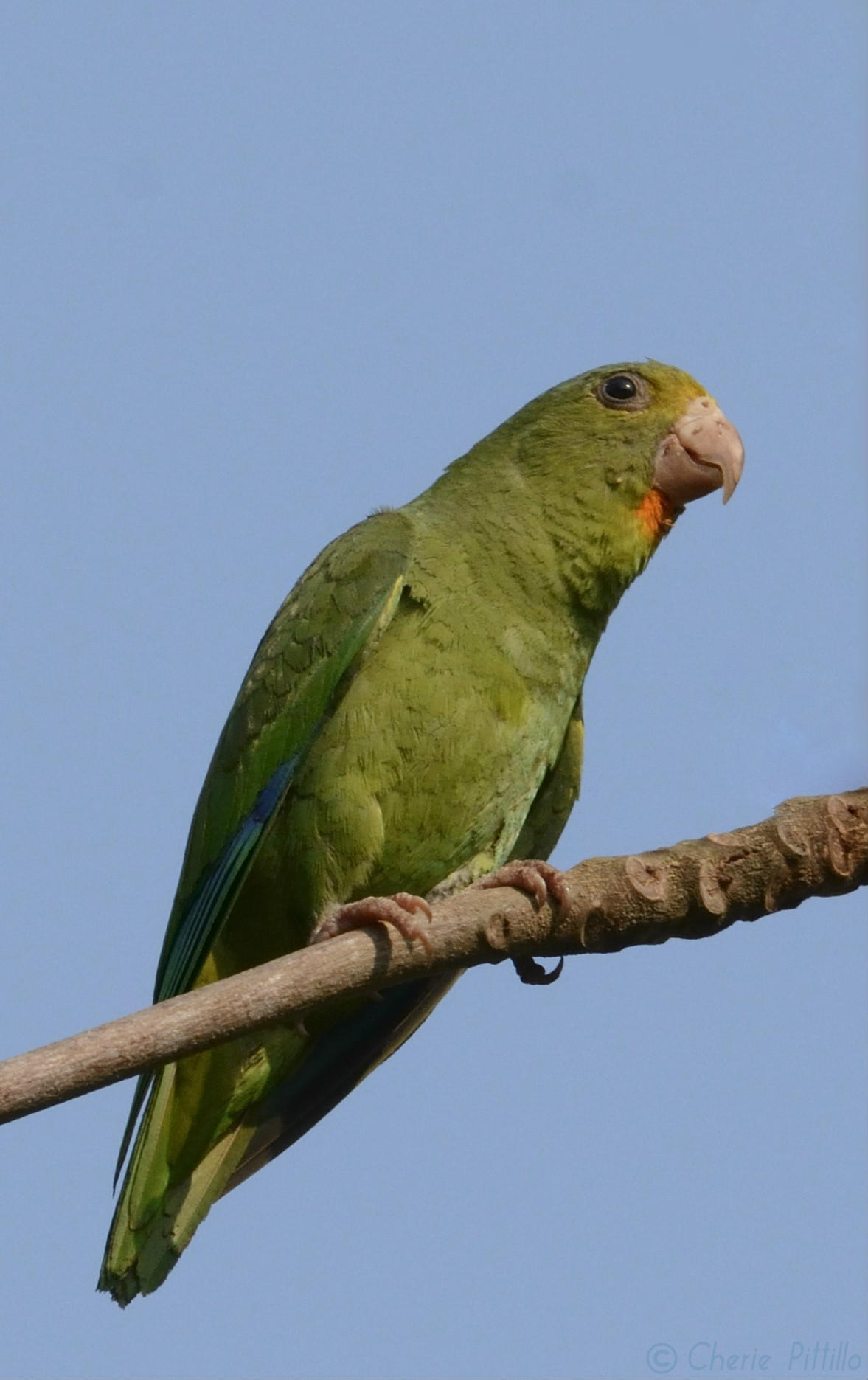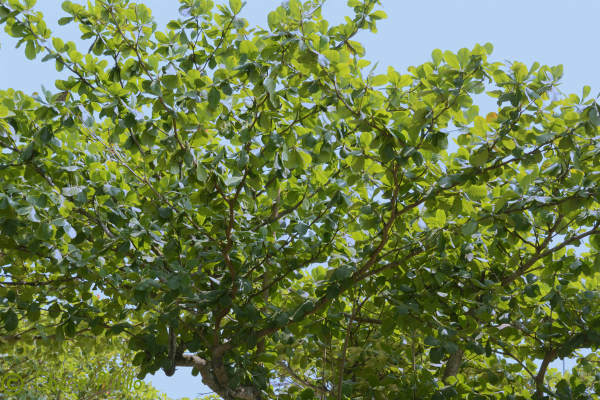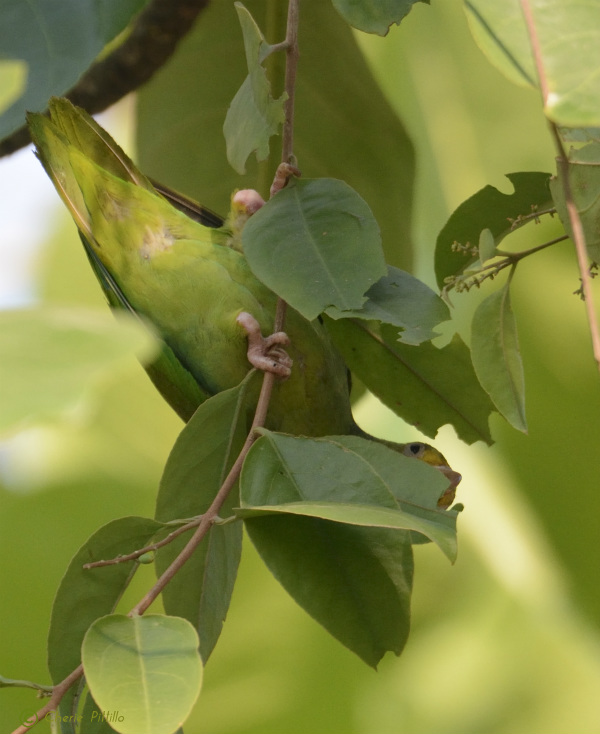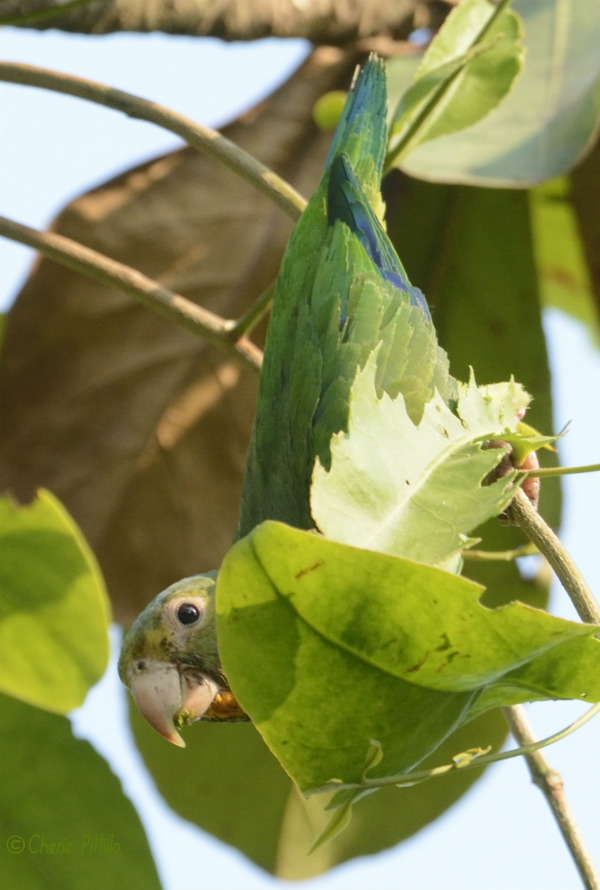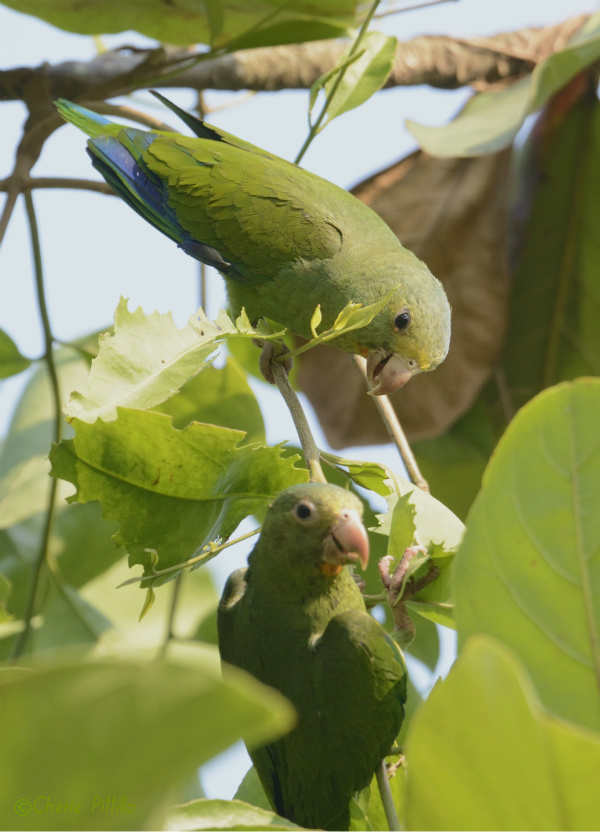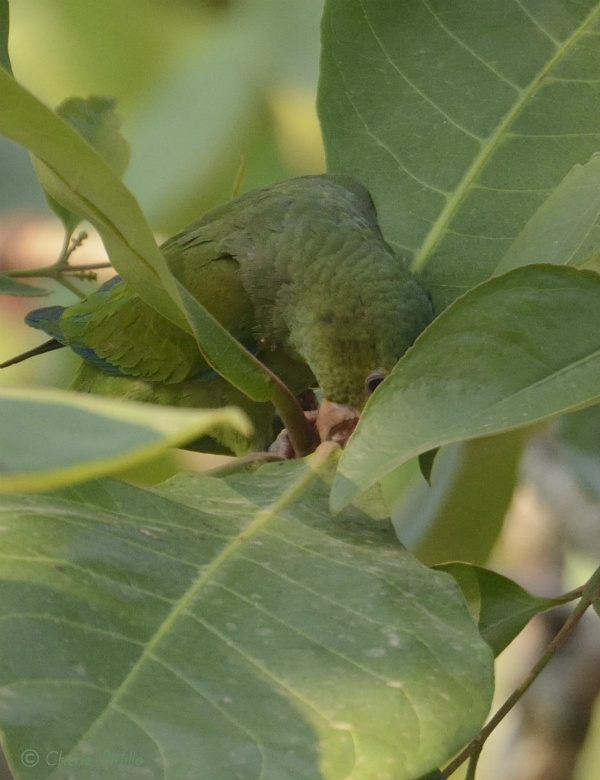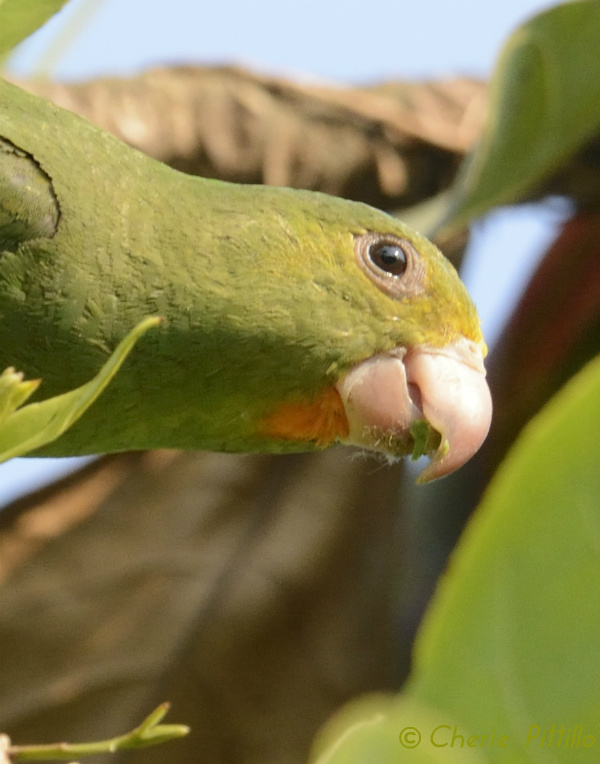COBALT-WINGED PARAKEET, Brotogeris cyanoptera, Catita aliazul (Spanish)
Hand-sized, green, leathery leaves litter the ground underneath a series of almond-like trees in the main square of Puerto Maldonado, Peru. Why would they fall off? Is it from the lack of rainfall in this dry season?
Suddenly these trees burst into song and draw me to them like a magnet.
SOUND LINK: http://www.xeno-canto.org/127057
I hear the birds loudly chattering while zooming in and out of the trees. What a flying green chaos! I think this would be utter confusion to a predator. It’s as if the trees become magicians to make the Cobalt-winged Parakeets invisible. The parakeets’ small size, flitty flights, and green coloring camouflage these two ounce wonders.
I am in awe.
Finally one lands near a young vine leaf on this tree and starts to nibble. Bit by bit, bite by bite, it continues to munch on what I assume equates to a tender leaf versus the thicker tree leaves on the ground. I marvel as the leaf becomes a smaller sculpture and then another parakeet joins the first one.
Dark green tree leaves continue to fall while the flock feeds. Aha! Caught in the act as one bites off the leaf! These Cobalt-winged Parakeets really are the Edward Scissorhands of parakeet pruners! I found no explanations or theories for this pruning behavior.
However, I did find a study where this parakeet species nests in mature forests in arboreal termite nests called termitaria. Let’s all conjugate….aquaria, terraria, termitaria. And yes, conjugal visits occur there. But the parakeets seem to select termite nests that include both termites and aggressive biting ants. Those ants live in part of the nest where the termites don’t reside. The study suggests the ants quickly deter predators by falling on and biting the attackers. Plus the ants stink. Yes, they have a strong odor which may mask the scent of the parakeets and their chicks. Can you say “olfactory camouflage”?
In addition to leaves, the Cobalt-winged Parakeets feed on flowering and fruiting trees. Limited information exists about their diet and basic information although these birds are common east of the Andes from Venezuela to Bolivia. They live in flocks of ten or more along riverbanks, rainforest, and partly cleared areas. Flocks usually have ten or more birds.
After half an hour of noisy feeding, “my” flock of forty flies away and continues their calls. (Isn’t that running off at the mouth?) With that orange soul patch under its mouth, maybe each Cobalt-winged Parakeet sings soul!
ENJOY THE EXPERIENCE OF BEING OUTSIDE!
DISCLAIMER: References do not agree on details about this species.
https://sora.unm.edu/sites/default/files/journals/condor/v102n03/p0529-p0538.pdf
http://www.hbw.com/species/cobalt-winged-parakeet-brotogeris-cyanoptera, https://www.parrots.org/encyclopedia/cobalt-winged-parakeet/, https:/www.reference.com/pets-animals/explore/parrots?qo=learnMore, http://www.arndt-verlag.com/projekt/birds_3.cgi?Desc=E282.htm&Pic=282_1.JPG, http://www.xeno-canto.org/127057, http://www.besgroup.org/2010/01/17/parakeets-eating-leaves-of-mangrove-plant/
Birds of Peru, p 174
Cherie Pittillo, “nature inspired,” photographer and author, explores nature everywhere she goes. She’s identified 56 bird species in her Merida, Yucatan backyard view. Her column, published on the 7th and 21st of each month, features anecdotes about birding in Merida, Yucatan and beyond. Contact: [email protected] All rights reserved, ©Cherie Pittillo


